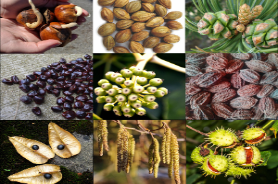*Introduction:*
Monstera deliciosa, commonly known as the Swiss cheese plant or split-leaf philodendron, is a popular tropical plant celebrated for its large, fenestrated leaves and unique appearance. Belonging to the Araceae family, this striking plant is cherished for its ornamental value and is commonly found in both indoor and outdoor settings.
**Appearance and Leaves:**
Monstera deliciosa is recognized for its large, heart-shaped leaves that have distinct oblong or oval-shaped holes, giving them the appearance of Swiss cheese. These fenestrations develop as the plant matures, creating a captivating and visually appealing foliage. The leaves are dark green and glossy, adding to the plant’s overall charm.
**Growth Habit:**
Monstera deliciosa has a climbing growth habit and is known for its aerial roots. In its natural habitat, it uses these roots to attach to trees and climb upwards towards sunlight. As an indoor plant, it can be trained to climb a support structure or allowed to grow in a trailing manner. With proper care, it can reach impressive heights, making it a statement piece in any space.
**Cultivation and Care:**
Monstera deliciosa thrives in bright, indirect light conditions. While it can tolerate lower light, it may result in slower growth and less pronounced fenestrations. The plant prefers well-draining soil and regular watering, allowing the top few inches of soil to dry out between waterings. It appreciates higher humidity levels, and misting the leaves or placing a humidifier nearby can promote healthy growth. Monstera deliciosa is sensitive to cold temperatures and should be protected from drafts and frost.
**Indoor and Outdoor Uses:**
Monstera deliciosa is a popular choice as an indoor plant, adding a touch of tropical elegance to living spaces, offices, and conservatories. Its large, distinctive leaves make it an eye-catching focal point. Outdoors, it can be grown in suitable climates, such as tropical and subtropical regions, where it can be used in gardens or grown as a climbing vine on walls or trellises. However, it is important to note that direct sunlight can scorch the leaves, so partial shade is recommended.
**Propagation:**
Propagation of Monstera deliciosa can be achieved through stem cuttings or by air layering. Stem cuttings can be taken from healthy plants and rooted in a suitable growing medium. Air layering involves creating a wound on a mature stem and encouraging it to develop roots while still attached to the parent plant. Both methods are effective and allow for the expansion of Monstera deliciosa collection or sharing with other plant enthusiasts.
**Fruit and Edible Qualities:**
Monstera deliciosa is known for producing fruit, which is a green, pineapple-like structure that ripens into a yellow color. The fruit has a unique, tropical flavor and is edible when fully ripe. However, it is important to note that the fruit should be consumed only when fully mature, as unripe fruit contains oxalic acid and can cause discomfort if eaten.
*Conclusion:*
Monstera deliciosa, with its distinctive fenestrated leaves, climbing growth habit, and tropical allure, is a highly sought-after plant. Whether grown indoors or outdoors, it adds a touch of natural beauty and architectural interest to any space. With its adaptability and unique appearance, Monstera deliciosa continues to captivate plant enthusiasts and remains a beloved choice for those seeking a statement plant with a tropical flair.













Reviews
There are no reviews yet.